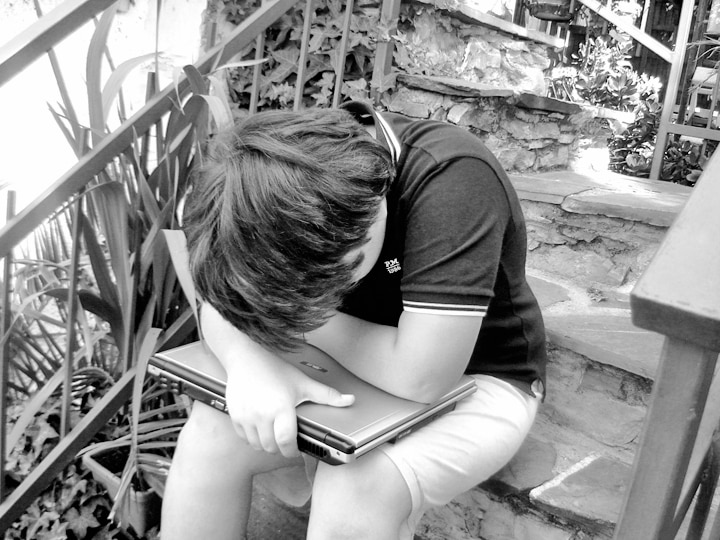
Anger is a normal, healthy emotion. For children and adults, however, anger can affect relationships. As a teacher or parent, you might find it difficult to deal with a child’s anger or aggressive behavior. Understanding anger issues in children can help you find strategies to aid children in expressing their anger constructively.
Why Kids Can Sometimes Be Angry and Aggressive
Anger and aggressive behavior may not make sense to us as adults. We look at ourselves as rational and calm, and anger from children doesn’t fit in with what we have as self-regulation. However, children, especially young children, don’t have the cognitive ability to self-regulate their emotions. As a result, they are likely to do what we see as being out of proportion for us. Realizing what is easy for adults to dismiss is not easy for children can help adults better understand anger issues in children. The following are some common reasons for children to be angry and aggressive.
Helplessness
Children feel small in relation to the rest of the world. They may feel unseen, not listened to, and insignificant. When dealing with children, it is necessary to remember children feel this smallness, an emotional state sometimes erupting in anger to be heard.
Additional Resources on Childhood Helplessness:
- What Helplessness Looks like in Children
- Childhood Overindulgence Can Lead to Learned Helplessness
- Learned Helplessness: Examples, Symptoms and Treatment
Disappointment
Disappointment rides along with a child’s emotions about helplessness. A child might have high expectations for an event or gift but no way to create satisfactory outcomes. When expectations are not met, children don’t know how to handle these twin emotions of helplessness and disappointment, which they exhibit as anger and aggressiveness.
Impatience
Impatience is the forerunner of disappointment. The anticipatory emotion children experience dovetails with the let-down. Children have a looser time sense than adults, and everything is immediate for them. When now doesn’t happen right now, children become disappointed and sometimes angry.
Additional Resources on Childhood Impatience:
- Impatient Child? Why Some Kids Can’t Wait Their Turn
- Impatient Child: How to Teach a Toddler to be Patient
Sadness
Sadness from disappointment, helplessness, loss, or humiliation can result in anger issues in children. The same forces of helplessness and disappointment can feed into sadness. Sadness is part of the let-down from “how the world is supposed to work,” making helpless anger a natural outcome of these combined emotional traumas. Sadness can also happen in children who do not feel loved, leading to a feeling of disappointment and helplessness.
Fear
Fear motivates anger issues in children, as well as in adults. The unknown is scary, creating emotions of helplessness and an inability to decide our own fates. Children have fewer life experiences and emotional reserves to draw upon than adults. This is especially true for young children, who have limited scopes outside their immediate and familiar environments. They may lash out when they perceive they are not in their “comfort zone.”
Insecurity
Children, like adults, judge themselves harshly compared to others. Feeling “not good enough” compared to others (such as siblings or classmates) may cause children to feel angry at themselves or those they think are superior. Children who have had traumatic childhoods are more likely to be insecure. Insecurity is one of the triggers of anger issues in children.
Additional Resources on Childhood Insecurity:
- An Insecure Childhood Affects How You Deal With Adult Stress
- Insecure Attachment: How Does it Develop in Childhood?
Problems Communicating Emotions
Children may not always be able to identify their emotions and explain what they feel. This leads to helplessness, which can explode into anger.
Additional Resources on Kids and Emotions:
- How to Help Your Kid Understand and Express Big Emotions
- 5 Ways to Help Children Identify and Express Their Emotions
Trauma
Children who have experienced trauma such as emotional, physical, and sexual may react to situations more quickly with anger.
Additional Resources on Childhood Trauma:
- The National Child Traumatic Stress Network – About Childhood Trauma
- Parenting a Child Who Has Experienced Trauma
Bullying
According to a study at Yale Medicine, one reason for bullying behavior is bullies score high in an inability to recognize signs other people are upset. Children who become bullies tend to have difficulties with anger management and aggression. Many children who become bullies have had life experiences such as childhood trauma that contribute to their bullying behavior. They may have co-factors such as ADHD and anxiety.
What Do Anger Issues in Children Look Like?

Anger issues and expression of anger usually vary by age and developmental level. Not every child, however, will show age-appropriate anger behavior. As a general guideline, these are stages of anger behavior.
Anger Issues in Preschool Kids
Preschool children are beginning to master language, but not quite. Newly verbal and pre-verbal children will show biting, crying, hitting, kicking, and pulling or shoving. They will scream, stomp, and throw things.
Anger Issues in Elementary Kids
Elementary children are more verbal than preschool children, but they still retain traits of preschool child anger with aggression, crying, name-calling, and outbursts. They will also shut down, have temper tantrums, and withdraw. Other anger symptoms are physical, such as an increase or decrease in appetite and heavy breathing, and somatic symptoms, such as headaches and stomach aches, tense muscles, and teeth clenching.
Emotional symptoms are changes in how the child outwardly expresses emotions, a decrease in the ability to function during events and activities, and being easily angered or frustrated. Areas of worry are relational concerns with peers, withdrawal from peers or family members, and suicidal thoughts.
Anger Issues in Teens
Teens who experience anger issues may have physical symptoms such as jaw clenching or grinding teeth, dizziness, headaches, muscle tension, shaking and trembling, and stomach aches. Internally, they may have adrenaline rushes, elevated blood pressure, and heart rate increase. Teens with aggressive anger issues may feel anxiety, guilt, and irritation. They also may feel resentment, sadness, or depression.
How to React to Angry and Aggressive Kids
When children are angry, it may be hard for adults to keep their temper. Adults, however, need to remain calm and in control of themselves to help children keep calm. Calmness and consistent responses to child anger can help to defuse anger in children.
Removing children from tense situations and sources of their anger can help defuse angry situations. In life-or-death situations where children are threatening to harm themselves or others, parents and teachers should bring in professional help, legal help, or both for children threatening harm.
Understanding Anger Issues in Children
Effectively addressing anger issues in children starts with understanding when a child is angry and choosing whether to take action.
How to Tell If a Child Is Angry
You can tell if children are angry if they verbalize their anger, lash out physically, or show anger signs consistent with their age.
Childhood Anger Resources:
What Do Outbursts Mean?
Physical outbursts often involve fighting, throwing things, or other destructive behavior. Verbal outbursts include screaming and intense verbal abuse.
Some reasons for outburst behavior outside of causes such as pre-verbal situations, young age of children, and other common anger reasons are mental illnesses such as anxiety, bipolar disorder, and borderline personality disorder. Depression, intermittent explosive disorder, oppositional defiant disorder, and post-traumatic stress disorder are reasons for outburst behavior.
When Should You Intervene?
If you notice anger issues in children, you should always intervene by having open communication with children about what is happening in their lives.
Intervention is a process of helping children verbalize their emotions and find constructive ways to deal with anger. You should intervene if a child threatens themselves or others with harm, but constant communication and teaching children to manage anger should help to avoid situations where children are at risk of harming themselves or others.
Resources
Steps to Help Kids With Anger Issues
Behavioral interventions are not one-off situations, but an ongoing process. As an adult, you have tools to anticipate the kind of help children may need with anger. The following are some steps you can take:
Letting Children Know It’s OK to Feel Angry
Anger is a valid emotion, and children need to know their feelings are valid. At the same time, they need to know the difference between angry feelings and how they express their angry feelings.
Helping Children Identify the Source of Their Anger
Even adults become overwhelmed with knowing how to express their anger. Talking with, not to, children about their feelings can help them decide on constructive behavior and actions in response to their angry feelings.
Positive Reinforcement to Manage Anger Issues in Children
Positive reinforcement from adults is essential for children to learn how to manage their anger. Here is what reinforcing positive behavior looks like:
Teaching Coping Strategies When Children Are Calm
Regularly practicing calming techniques when children are calm helps them learn self-regulation when they can think through their emotions and absorb how to be calm.
Modeling Healthy Ways to Deal With Anger
Children imitate the behavior they see in adults. They need to see healthy responses to feeling angry and practicing emotional management. Adults who show healthy anger management will show children how to manage their emotions.
Showing Children You Care
Listening to children is critical to show you care. When you show children you care, you help to alleviate the cause of anger, such as helplessness, sadness, fear, disappointment, insecurity, and impatience. Parents and teachers should always listen to children if they describe traumatic events, and they should follow up with legal authorities.
Outside Support
Sometimes parents and teachers do not have the resources to help children with anger issues, such as in situations where children are self-harming, have suicidal thoughts, and are hurting others. These situations require outside support from mental health professionals.
Additional Resources
These are some additional resources useful for parents and teachers in helping children manage anger:
American Psychological Association
The American Psychological Association has information about children’s mental health and links to related topics.
Center for Disease Control and Prevention
The CDC has mental health resources for children covering issues such as anxiety and depression in children, improving access to care, and treatment of behavior problems.
Healthy Children.org
This site from the American Pediatric Association has information about early childhood to teens, covering mental health and related issues.
National Institute of Mental Health
The NIMH has information about child and adolescent mental health and links to resources.
